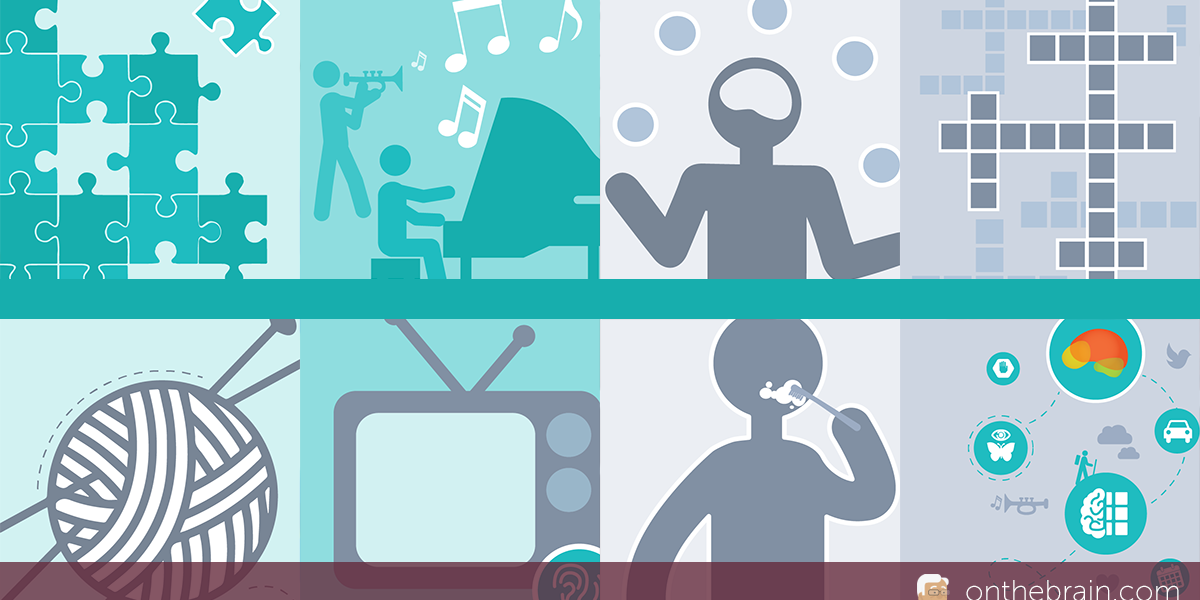Dr. Michael Merzenich conducted the seminal experiments that led to the discovery of lifelong plasticity — that the brain changes chemically, physically, and functionally based on sensory and other inputs at any age. Last year, Dr. Merzenich was made a Kavli Laureate, the highest honor in neuroscience. He has been elected to both the US National Academy of Sciences and the National Academy of Medicine.
There’s a lot you can do to engage the brain’s machinery in ways that help keep it healthy as an organ.
The brain’s plasticity — its ability to change not just functionally, but physically and chemically, too — is most heavily engaged by activities that are intensive, repetitive and progressively challenging. Those that emphasize refining the speed and accuracy of the brain’s sensory systems are most apt to help with other activities in daily life.
Look for activities that are attentionally demanding and inherently rewarding, and that continuously involve new elements to master. Those types of activities engage brain chemistry that’s beneficial for learning, remembering and mood — by stimulating the production of acetylcholine (when paying attention), norepinephrine (when encountering something new), and dopamine (when feeling rewarded).
Here are some of my favorite brain healthy activities and why each makes my list.
Do A Jigsaw Puzzle
Be sure to choose one that will be challenging to you — no fewer than 500 pieces please! Mundane as they may seem, jigsaw puzzles provide a good workout for your brain. Completing one requires you to heavily engage your visual processing system — scanning for target pieces, making fine distinctions about shapes and colors, and mentally rotating pieces in your mind. It also engages the brain system controlling movement, as you manipulate pieces in your hand and shift attention from the small piece to the “big picture.”
Learn A Musical Instrument
As research shows, learning to play a musical instrument is a fantastic workout for the brain. That makes sense: it calls on many interrelated dimensions of brain function, including highly attentive listening, fine movement control, rhythm (coordinating timing and movement) and translation of written notes (sight) to music (movement and sound).
Play Ball
If it’s been a while, this would be a good time to reacquaint yourself with a ball. Practice throwing it in the air and catching it. You might even want to take up juggling. Doing so can hone your brain’s visual, tactile and hand-eye coordination responses. Scientists have recorded improvements in the brains of people who master these kinds of sensory-guided movement skills. Practicing skills that make good, fast use of sensations from listening, vision and touch have widespread positive impact across the brain.
Word Games
Choose a multi-syllabic word. For example, memorize. Give yourself five minutes to list as many words as you can from the letters in the word (such as me, memo, zero, ire, memoir, more, mere…). This type of exercise works on what psychologists call fluency — the ability to find a word. Generating as many words as you can in a limited time period challenges the brain to practice the word finding skill you need in that pause when you search for a word. Many word games lack that element of temporal challenge, and have not been shown to improve fluency. I still play that kind of word game too, but really just for fun.
Knit or Crochet
Knitting and crocheting are great activities for building the brain’s fine motor control processing. But don’t be satisfied with being a slow, careful artist: constantly push yourself to become faster and better. This is another activity that requires close attention to achieve fast, errorless performance. It’s a good exercise for the brain machinery that controls and sustains alertness and attention, while engaging both vision and movement.
Turn Down the TV
Set your television volume down a little from where you normally have it set. See if by concentrating you can follow just as successfully as when the volume was higher. As soon as that gets easy, turn it down another notch. Why? One reason people start turning the volume up is because the brain’s auditory processing machinery starts to have static. Although you can’t get rid of this internal static by turning up the volume, people do it anyway to make the target signal (what’s being said on TV) louder. This just gets you used to needing a very loud signal. Instead, turn down the TV to re-tune your brain to listen to information at a more conversational tone.
Switch Hands
Learn to use your “other” hand. If you’re right-handed, use your left hand for some daily activities. Start with brushing your teeth, and practice until you have perfected it. Try to work your way up to more complex tasks, such as eating. This is an example of a type of exercise that takes something you know and puts it in a new and demanding context. Doing such an activity can drive plasticity on a large scale, as millions of neurons adjust to establish better control of your “other” hand.
Brain Exercises
If properly used, a computer is a great tool for providing the brain with intensive, repetitive and progressively challenging activities. You should look for brain exercises backed by high-quality studies. Making efficient, useful computerized brain exercises has been the focus of my work in recent decades. My own work has led to BrainHQ (www.brainhq.com), an online platform (and app) with dozens of exercises targeting different brain systems. A recent independent academic report found that BrainHQ was the only brain training program with multiple high-quality studies showing it improves cognition in older adults. We try to make it affordable for everyone, and many local libraries offer it for free. You may want to give it a try.







